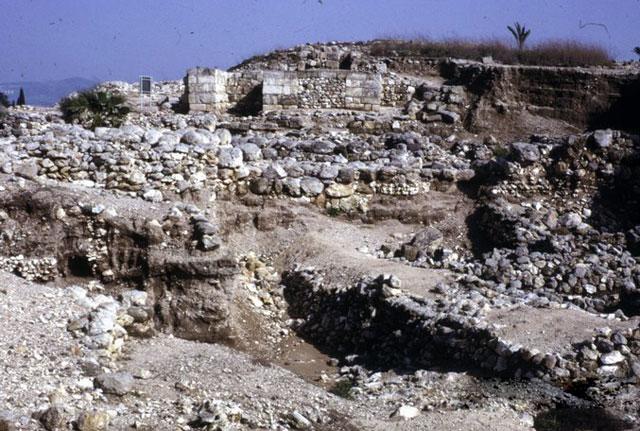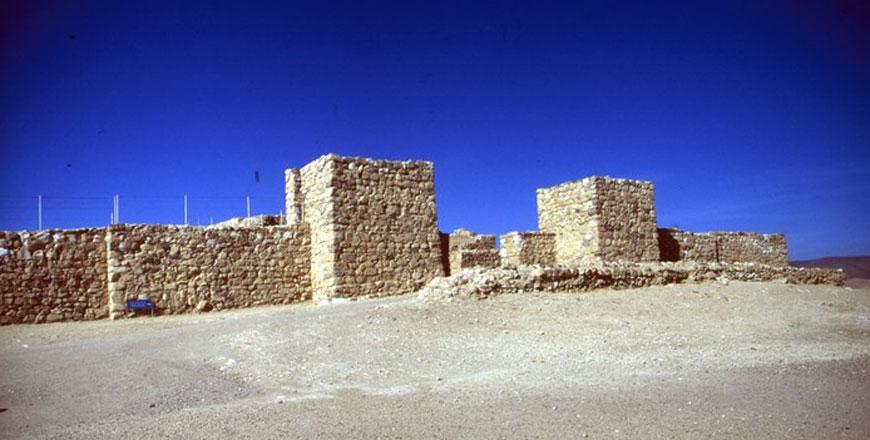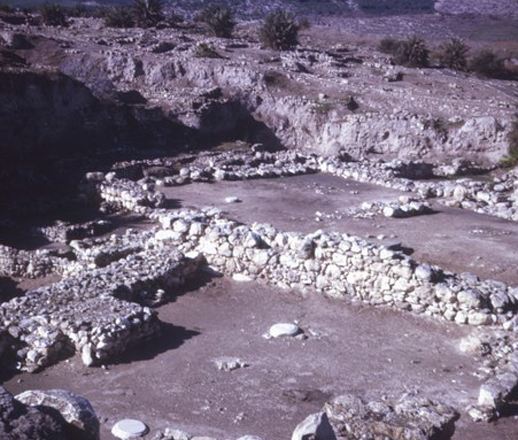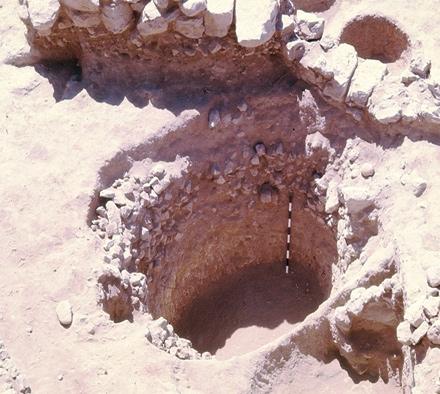You are here
Archaeological discoveries reveal unique Early Bronze Age village structures
By Saeb Rawashdeh - Jul 28,2024 - Last updated at Jul 28,2024

Strongly fortified throughout the ages, Tell Mutesellim boasted a stone Syrian-type gate in the days of Canaanite inhabitation (Photo courtesy of ACOR)
AMMAN — In the Early Bronze Age, villages typically covered no more than 5 hectares. Excavations have revealed that these villages were sparsely constructed, with dwellings irregularly distributed and separated by open spaces.
The dwellings were mostly of the courtyard type—a broad room proceeded by a courtyard—which had been common in the southern Levant since the Late Neolithic period.
Another distinctive type of Early Bronze Age dwelling was the oval or elongated house with apses at both ends, as noted by French scholar Pierre de Miroschedji. Such settlements were discovered in the coastal regions of Palestine and Lebanon.
"Some Early Bronze Age settlements also contained multi-roomed buildings used for storage, cultic activities, and various other purposes," noted the professor. He added that at Tell Mutesellim, two superimposed temples each comprised a large hall, also of the broad room type, with an axial row of pillar bases, preceded by a paved courtyard surrounded by an enclosure.
There is increasing evidence that the urbanisation process accelerated at the end of the Early Bronze Age.
"Although the presence of fortifications remains uncertain, except on some transitional sites in the north and an Egyptian site in the south [Tell Sakan], some sites show an increasing density of dwellings, suggesting a constriction of the settlement which took on a progressively urban character," said De Miroschedji, whose academic interests have been urbanisation in the Early Bronze Age.
Tell Mutesellim testifies to the appearance of monumental architecture on a scale unmatched before the Early Bronze Age, De Miroschedji, and a regional cultic centre that attracted pilgrims.
"The Early Bronze material culture represents a sharp break with the preceding Late Chalcolithic. Local particularisms are conspicuous in the realm of pottery and Early Bronze Age pottery shows a great diversity which goes well beyond the three categories [red, painted, and grey burnished] often invoked to describe it. Red and common wares present several regional varieties with few connections between them, while there are at least three kinds of painted wares," De Miroschedji said, adding that burnished grey ware is an enduring EB I tradition mainly in the north of the country, although there is no clear relationship between the sinuous-sided grey burnished bowls, which typify the northern EB IA, and those found during the following phase.
Moreover, an important feature of the Early Bronze pottery in the north is the appearance of carefully finished red burnished vessels, forerunners of the so-called Abydos Ware.
"Although not common, the use of tournettes for wheel-shaping vessels is well attested in Lebanon during the Early Bronze Age and metallurgy underwent significant developments, particularly in Wadi Faynan, where mining activities changed scale and nature during the Early Bronze Age," De Miroschedji said.
New copper veins were exploited, refining operations were conducted on-site, and the ingots were probably exported to settlements located in the heart of Palestine.
The more widespread use of copper implements is suggested by the impoverishment of the flint tool and the latter comprises only the so-called Canaanean blades, whose appearance heralds the beginning of the Early Bronze Age in the entire Near East, alongside tabular scrapers, borers, and several ad hoc tools with no peculiar characteristics, De Miroschedji highlighted, adding ground stone objects and implements were mainly imported from peripheral areas (Golan and Negev).
A remarkable innovation in northern Galilee is the adoption of the cylinder seal, an indirect result of an Urukian influence exerted on Syria and the Lebanese coast.
"Cylinder seals are decorated with naturalistic design represented in a flat relief suggesting that they were carved in wood. Following the Levantine practice, they were not rolled on jar or door sealings, but on the shoulders of pithoi before firing," De Miroschedji explained, adding that significant economic development took place at that time.
Related Articles
AMMAN — Ancient burial sites provide an abundance of information that are normally lacking due to lost written sources, if there were any.
AMMAN — According to radiocarbon calibrated dates, the Early Bronze I (EB 1) lasted almost six centuries, between c. 3,700 and c. 3,100 BC.
AMMAN — Cave dwelling was practised on a large scale in Sahab, located 12 kilometres southeast of Amman, during the Chalcolithic period and














